Senior Executive - EHS
50+ Senior Executive - EHS Interview Questions and Answers
Asked in Teyro Labs

Q. Explain the process flow diagram of Effluent Treatment Plant (ETP), Sewage Treatment Plant (STP), Reverse Osmosis (RO), Multiple Effect Evaporator (MEE), and Agitated Thin Film Dryer (ATFD).
Effluent Treatment Plant (ETP), Sewage Treatment Plant (STP), Reverse Osmosis (RO), Multiple Effect Evaporator (MEE), and Agitated Thin Film Dryer (ATFD) are all components of wastewater treatment processes.
Effluent Treatment Plant (ETP) is used to treat industrial wastewater before it is discharged into the environment.
Sewage Treatment Plant (STP) is used to treat domestic wastewater before it is released into water bodies.
Reverse Osmosis (RO) is a water purification process...read more
Asked in Teyro Labs

Q. What legal requirements are handled in the factory, and can you explain them?
Legal requirements in a factory include occupational health and safety regulations, environmental regulations, and labor laws.
Occupational health and safety regulations ensure a safe working environment for employees, such as providing protective equipment and implementing safety protocols.
Environmental regulations govern the proper handling and disposal of hazardous materials, waste management, and pollution control measures.
Labor laws cover aspects like working hours, minim...read more
Senior Executive - EHS Interview Questions and Answers for Freshers
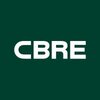
Asked in CBRE

Q. What is the hazard , near miss ,unsafe acts and conditions
Hazard, near miss, unsafe acts and conditions are all related to identifying potential risks in the workplace.
Hazard refers to any potential source of harm or danger, such as chemicals, machinery, or electrical equipment.
Near miss is an incident that could have resulted in an injury or damage, but was avoided due to luck or timely intervention.
Unsafe acts are actions or behaviors that increase the risk of injury or harm, such as not wearing protective gear or using equipment ...read more

Asked in CBRE

Q. What safety precautions should be taken in work locations?
Safety in work locations is crucial to prevent accidents and injuries.
Regular safety inspections and audits
Proper training and education for employees
Use of personal protective equipment (PPE)
Emergency response plans and drills
Clear communication of safety policies and procedures
Regular maintenance and upkeep of equipment and facilities

Asked in Pride Purple Group

Q. How would you respond to a worker refusing to follow safety procedures?
Addressing a worker's refusal to follow safety procedures requires understanding, communication, and corrective action.
Engage in a calm conversation to understand the worker's concerns.
Reiterate the importance of safety procedures for their well-being and that of their colleagues.
Provide examples of potential consequences of not following safety protocols, such as accidents or injuries.
Offer additional training or resources if the worker feels unprepared to follow the procedu...read more

Asked in Pride Purple Group

Q. Suppose you identify a hazard; what steps would you take?
Identify hazards and implement a systematic approach to mitigate risks effectively.
Conduct a thorough risk assessment to understand the nature and severity of the hazard.
Implement immediate control measures to eliminate or reduce exposure, such as using PPE.
Report the hazard to relevant stakeholders and ensure proper documentation.
Develop a long-term action plan to address the hazard, including training and policy updates.
Monitor the effectiveness of the controls and make adj...read more
Senior Executive - EHS Jobs
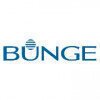
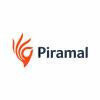


Asked in Pride Purple Group

Q. What would you do if you discovered a non-compliance issue?
Addressing non-compliance involves immediate action, investigation, and implementing corrective measures to prevent recurrence.
Immediately assess the severity of the non-compliance issue.
Notify relevant stakeholders and management about the issue.
Conduct a thorough investigation to understand the root cause.
Implement corrective actions to address the non-compliance.
Develop a plan for monitoring and ensuring compliance moving forward.
Example: If a safety protocol was not follo...read more
Asked in Teyro Labs

Q. Explain the laboratory analysis of COD, MLSS, MLVSS, DO, pH, TDS, and TSS.
Laboratory analysis of various parameters including COD, MLSS, MLVSS, DO, pH, TDS and TSS is crucial for monitoring and controlling wastewater treatment processes.
COD (Chemical Oxygen Demand) measures the amount of organic matter in wastewater
MLSS (Mixed Liquor Suspended Solids) and MLVSS (Mixed Liquor Volatile Suspended Solids) measure the concentration of microorganisms in wastewater
DO (Dissolved Oxygen) measures the amount of oxygen available for microorganisms to break do...read more
Share interview questions and help millions of jobseekers 🌟

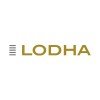
Asked in Lodha Group

Q. What is scaffold and inspection process How many work permit is being used in construction site What are the safety measures are being taken prior to allow slab casting What risk assessment
Scaffolding is a temporary structure used in construction for workers to access heights. Inspection process ensures safety and compliance.
Scaffold is a temporary structure made of wood or metal used to support workers and materials during construction.
Inspection process involves checking the scaffold for stability, proper assembly, and adherence to safety regulations.
Work permits in construction sites vary depending on the type of work being done, such as hot work, confined s...read more
Asked in Kalki Healthcare

Q. What is the importance of fire safety measures in the workplace?
Fire safety measures are crucial in the workplace to protect lives, property, and ensure compliance with regulations.
Risk Mitigation: Implementing fire safety measures reduces the risk of fire incidents, protecting employees and assets. For example, regular fire drills can prepare staff for emergencies.
Compliance with Regulations: Adhering to fire safety regulations helps avoid legal penalties and ensures a safe working environment. For instance, having fire extinguishers and...read more

Asked in AGROCEL INDUSTRIES

Q. What is your knowledge of documentation and audit processes?
I have extensive knowledge of documentation and audit processes in EHS.
I have experience creating and maintaining EHS documentation such as policies, procedures, and records.
I am familiar with conducting internal and external audits to ensure compliance with regulations and standards.
I have implemented document control systems to track revisions and approvals.
I have participated in audits by regulatory agencies and third-party organizations.
I have trained staff on proper docu...read more

Asked in Micron Electricals

Q. What precautions should be taken during testing and commissioning activities?
Precautions during testing and commissioning ensure safety, compliance, and operational efficiency in EHS activities.
Conduct a thorough risk assessment before starting any testing activities.
Ensure all personnel are trained and aware of safety protocols.
Use appropriate personal protective equipment (PPE) such as helmets, gloves, and goggles.
Establish clear communication protocols among team members to avoid misunderstandings.
Implement lockout/tagout procedures to ensure equip...read more
Asked in Teyro Labs

Q. Briefly describe the EHS management system.
EHS management system is a framework to manage environmental, health and safety risks in an organization.
It includes policies, procedures, and practices to identify, assess, and control risks.
It involves compliance with regulations and standards, as well as continuous improvement.
It covers areas such as hazardous materials management, emergency response planning, and employee training.
Examples of EHS management systems include ISO 14001 and OHSAS 18001/ISO 45001.
Effective EHS...read more

Asked in CBRE

Q. What is Mock drill ,what is work permit process
Mock drill is a practice exercise to test emergency response plans. Work permit process is a system to ensure safety before starting any hazardous work.
Mock drill involves simulating an emergency situation to test the preparedness of the organization.
Work permit process involves obtaining permission before starting any hazardous work to ensure safety of workers and environment.
Mock drills and work permit processes are important components of EHS management systems.
Mock drills...read more
Asked in Teyro Labs

Q. Explain the types of work permit systems and their applications.
Work permit systems are used to control high-risk activities. There are four types of work permit systems.
Hot work permit system - for activities involving heat or sparks
Confined space permit system - for activities in confined spaces
Cold work permit system - for activities in cold environments
Excavation permit system - for activities involving excavation
Asked in Teyro Labs

Q. Explain how you handle a waste management system.
Waste management system involves collection, transportation, and disposal of waste in an environmentally friendly manner.
Waste segregation at source
Proper storage and labeling of waste
Transportation of waste to authorized disposal sites
Treatment of hazardous waste before disposal
Regular monitoring and reporting of waste management activities

Asked in Puzzolana Machinery Fabricators

Q. How can you ensure the company's safety?
I can handle the company in a safety way by implementing robust safety policies, conducting regular safety audits, providing continuous safety training, and fostering a safety culture.
Implement robust safety policies and procedures to ensure compliance with regulations and standards
Conduct regular safety audits to identify and address potential hazards
Provide continuous safety training to employees to increase awareness and knowledge of safety practices
Foster a safety culture...read more
Asked in Teyro Labs

Q. Explain the limitations of pollution parameters.
Pollution parameters have limitations in accurately measuring the extent of pollution.
Pollution parameters may not capture all types of pollutants
The sampling frequency may not be sufficient to capture variations in pollution levels
The accuracy of measurement may be affected by environmental factors such as wind and temperature
The cost of monitoring may limit the number of parameters that can be measured
The interpretation of data may be complex and require expert knowledge
For...read more

Asked in Lodha Group

Q. How do you convince vendors to follow safety procedures?
Effectively communicate the importance of safety procedures to vendors through collaboration, education, and clear expectations.
Build relationships: Establish trust with vendors by engaging them in safety discussions and understanding their concerns.
Provide training: Offer training sessions on safety procedures to ensure vendors understand the protocols and their importance.
Share data: Present statistics on incidents and near misses to highlight the need for strict adherence ...read more

Asked in Lodha Group

Q. What are Construction Safety Management Systems?
Construction safety management systems ensure safety protocols and practices are in place to protect workers on construction sites.
Risk Assessment: Identifying potential hazards before work begins, such as unstable scaffolding.
Training Programs: Regular safety training for workers, like fall protection training.
Safety Audits: Conducting periodic inspections to ensure compliance with safety regulations.
Incident Reporting: Establishing a system for reporting accidents and near ...read more

Asked in United Breweries

Q. What precautionary measures should be taken during grinding?
Precautions during grinding include using protective gear, ensuring proper ventilation, and maintaining equipment.
Wear appropriate personal protective equipment (PPE) such as goggles and gloves to protect against flying debris.
Ensure proper ventilation in the workspace to avoid inhalation of dust and fumes.
Regularly inspect and maintain grinding equipment to prevent malfunctions and accidents.
Use the correct grinding wheel for the material being worked on to ensure efficiency...read more

Asked in Micron Electricals

Q. What safety precautions should be taken during work at heights?
Safety precautions during height work include proper training, equipment, and emergency procedures to prevent accidents.
Use personal protective equipment (PPE) such as helmets, harnesses, and non-slip footwear.
Ensure proper training for workers on height safety protocols and equipment usage.
Conduct regular inspections of ladders, scaffolding, and other equipment before use.
Implement fall protection systems like guardrails, safety nets, or personal fall arrest systems.
Establis...read more

Asked in Puzzolana Machinery Fabricators

Q. What are the procedures for staff increments?
Staff increments procedures involve performance evaluations, salary reviews, and approval from management.
Staff performance evaluations are conducted regularly to assess eligibility for increments.
Salary reviews are done to determine the amount of increment based on performance and market standards.
Increments are approved by management after reviewing performance evaluations and salary recommendations.
Communication of increment decisions to staff is important to maintain tran...read more

Asked in Cipla

Q. Documents process in env and forms
Documents process in env and forms
Develop and implement a document control system
Ensure all forms are up-to-date and accessible
Train employees on proper document handling procedures
Regularly review and update processes and forms
Maintain compliance with relevant regulations and standards
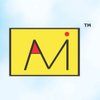
Asked in Ami Polymer

Q. Explain all GM-related safety activities.
Safety activities in GM focus on risk management, compliance, training, and continuous improvement to ensure a safe work environment.
Conduct regular safety audits to identify potential hazards and implement corrective actions.
Implement comprehensive training programs for employees on safety protocols and emergency procedures.
Utilize safety performance metrics to track incidents and improve safety measures.
Engage employees in safety committees to foster a culture of safety and...read more
Asked in Teyro Labs

Q. Explain the difference between an accident and an incident, and describe the components of an investigation report.
Accident/Incident investigation report is a document that outlines the details of an incident, identifies the root cause, and recommends corrective actions.
The report should include a description of the incident, including the date, time, and location.
It should identify the people involved and any witnesses, as well as the extent of any injuries or damage.
The investigation should identify the root cause of the incident, which may involve examining equipment, procedures, or hu...read more

Asked in United Breweries

Q. What PPEs are used on site locations?
PPEs are essential for ensuring safety and health at site locations, protecting workers from various hazards.
Hard hats: Protect against head injuries from falling objects.
Safety goggles: Shield eyes from chemical splashes and flying debris.
Respirators: Filter harmful airborne particles and gases.
Gloves: Provide hand protection from chemicals, cuts, and abrasions.
Steel-toed boots: Protect feet from heavy objects and punctures.
High-visibility vests: Ensure workers are seen in l...read more
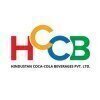
Asked in Hindustan Coca Cola Beverages

Q. What are the procedures for ETP and STP?
ETP & STP procedures are used for treating industrial and sewage wastewater, respectively.
ETP stands for Effluent Treatment Plant and is used to treat industrial wastewater before it is discharged into the environment.
STP stands for Sewage Treatment Plant and is used to treat sewage wastewater before it is released back into the environment.
Both procedures involve physical, chemical, and biological processes to remove contaminants and pollutants from the water.
ETP may include...read more

Asked in Mitsubishi Power India

Q. Risk and opportunities of construction site.
Construction sites pose various risks and opportunities for EHS professionals to manage effectively.
Risks include falls from heights, exposure to hazardous materials, equipment malfunctions, and structural collapses.
Opportunities include implementing safety protocols, conducting regular inspections, providing training to workers, and utilizing technology for monitoring.
Examples: Risk - Workers falling from scaffolding. Opportunity - Implementing fall protection measures.
Risk ...read more
Asked in Kshema Power

Q. What safety plans do you know?
Safety plans are comprehensive documents outlining procedures and protocols to ensure the safety of employees and prevent accidents in the workplace.
Emergency response plan
Fire safety plan
Hazard communication plan
Fall protection plan
Personal protective equipment (PPE) plan
Interview Experiences of Popular Companies






Calculate your in-hand salary
Confused about how your in-hand salary is calculated? Enter your annual salary (CTC) and get your in-hand salary


Reviews
Interviews
Salaries
Users










